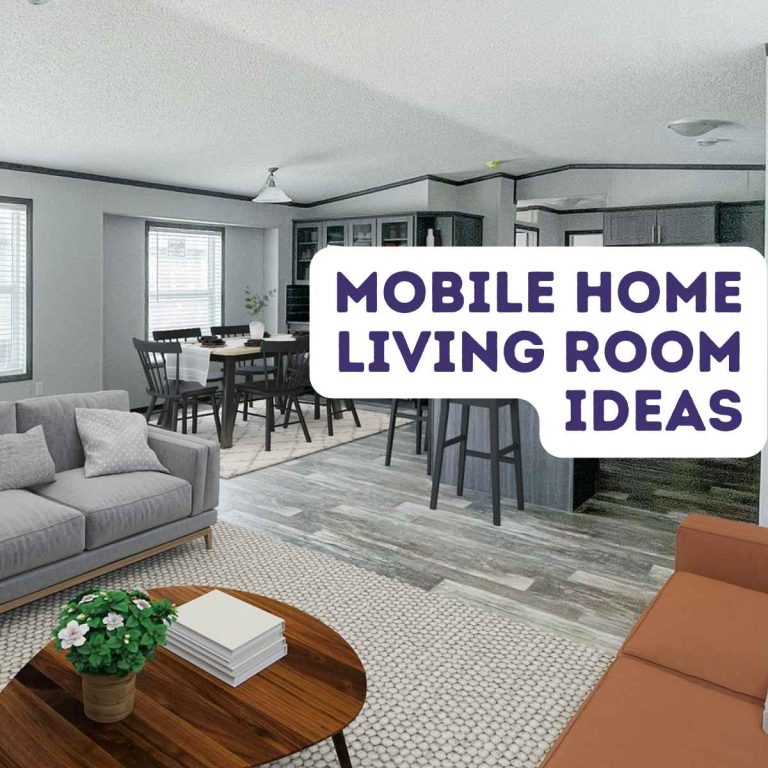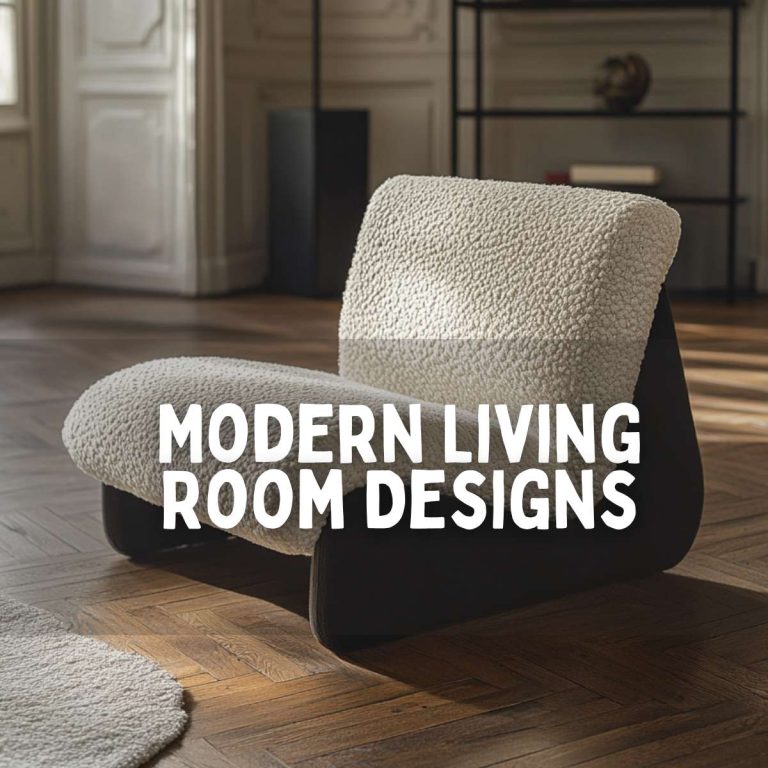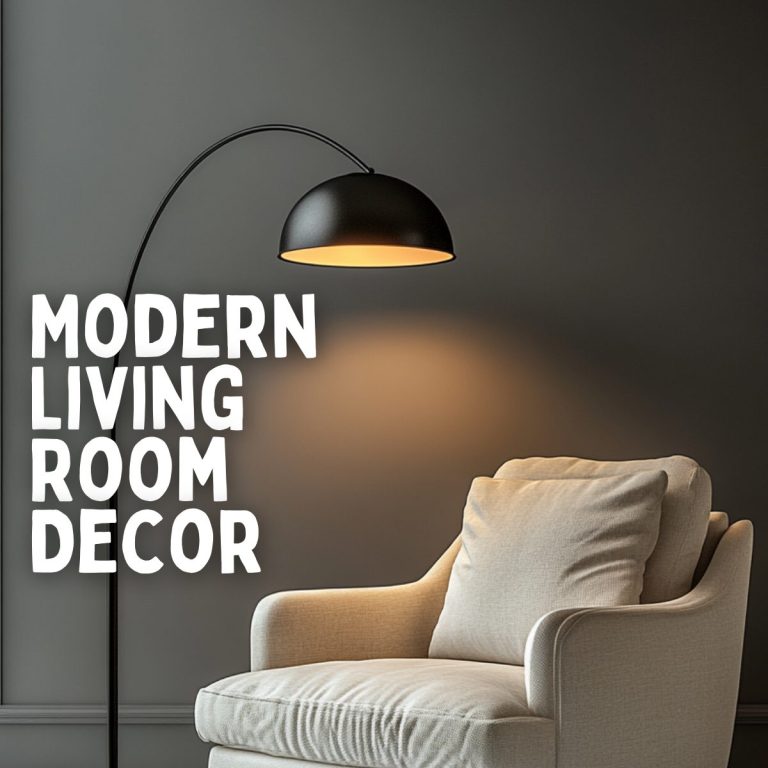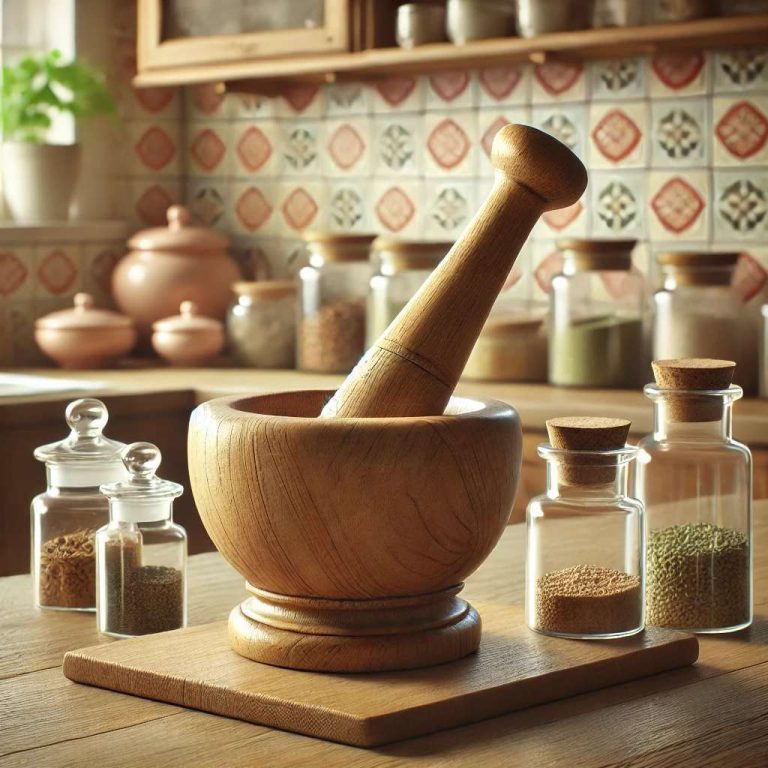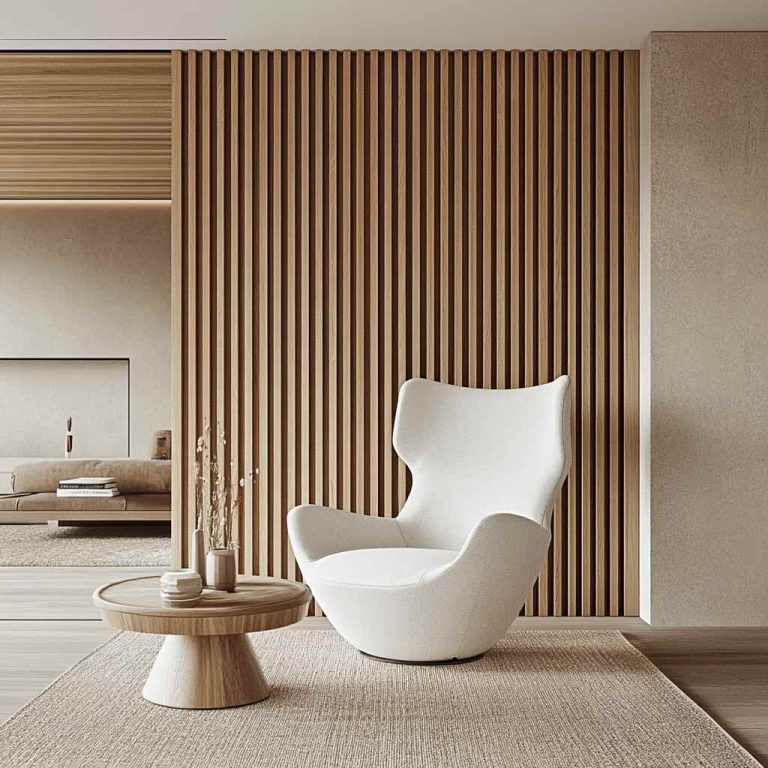Modern Interiors with a Bamboo Accent Wall: Elevating Style with Sustainability
In the ever-evolving world of interior design, the fusion of natural elements with modern aesthetics has become a dominant trend. Today’s homeowners and designers seek more than just sleek lines and monochrome palettes—they’re looking for warmth, texture, and a connection to the natural world. Enter bamboo: a highly renewable material that’s stylish, sustainable, and remarkably versatile.
Bamboo accent walls are emerging as a transformative design feature, injecting personality and serenity into contemporary spaces. This article explores everything from the benefits of bamboo to expert tips, real-world applications, and future design trends.
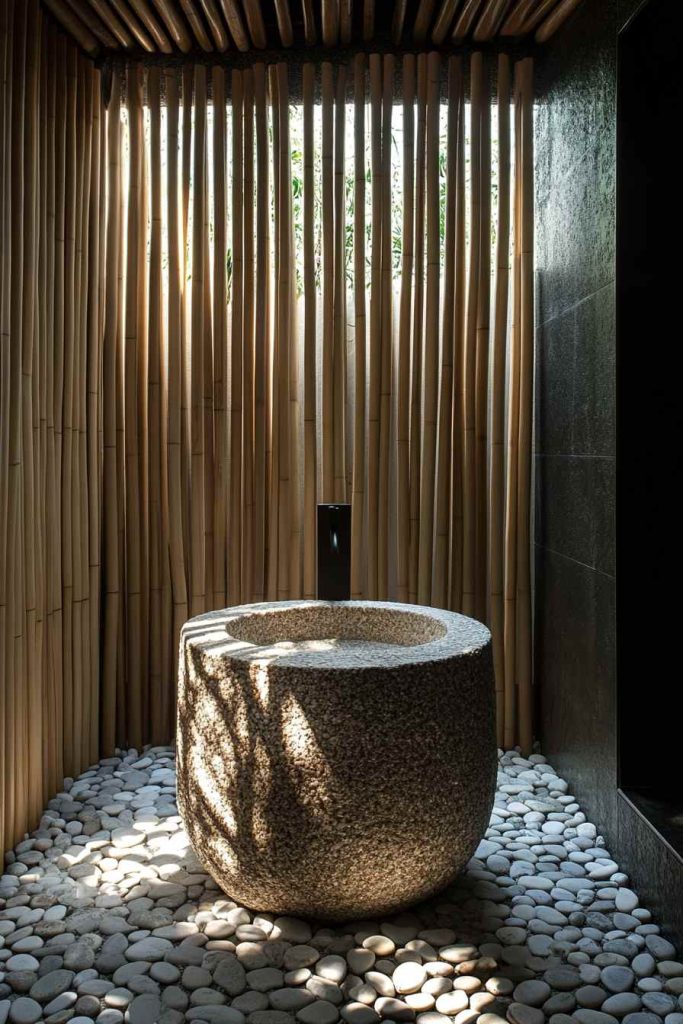
Understanding Bamboo as a Design Material
Characteristics of Bamboo: Strength, Versatility, and Texture
Bamboo is a fast-growing grass, yet it boasts the strength of hardwood. With a tensile strength that rivals steel, bamboo offers exceptional durability while maintaining a light, flexible structure. Its surface texture—marked by fine linear grains and natural nodules—adds visual interest to any space.
Sustainability Benefits: Fast-Growth, Renewable, and Eco-Friendly
Bamboo matures in just 3-5 years, compared to the decades required by hardwood trees. It regenerates without replanting and requires little water or pesticides. It’s biodegradable, carbon-sequestering, and energy-efficient to harvest—making it a favorite for eco-conscious homeowners.
Bamboo vs. Other Accent Wall Materials
Compared to reclaimed wood, brick, or concrete, bamboo is lighter, easier to install, and lends a unique organic look. While wood can warp and stone may feel cold, bamboo strikes a rare balance of durability and warmth.
The Aesthetic Appeal of Bamboo Accent Walls
A bamboo accent wall serves as both a focal point and a subtle backdrop. Its natural hue and fine texture enrich modern interiors by:
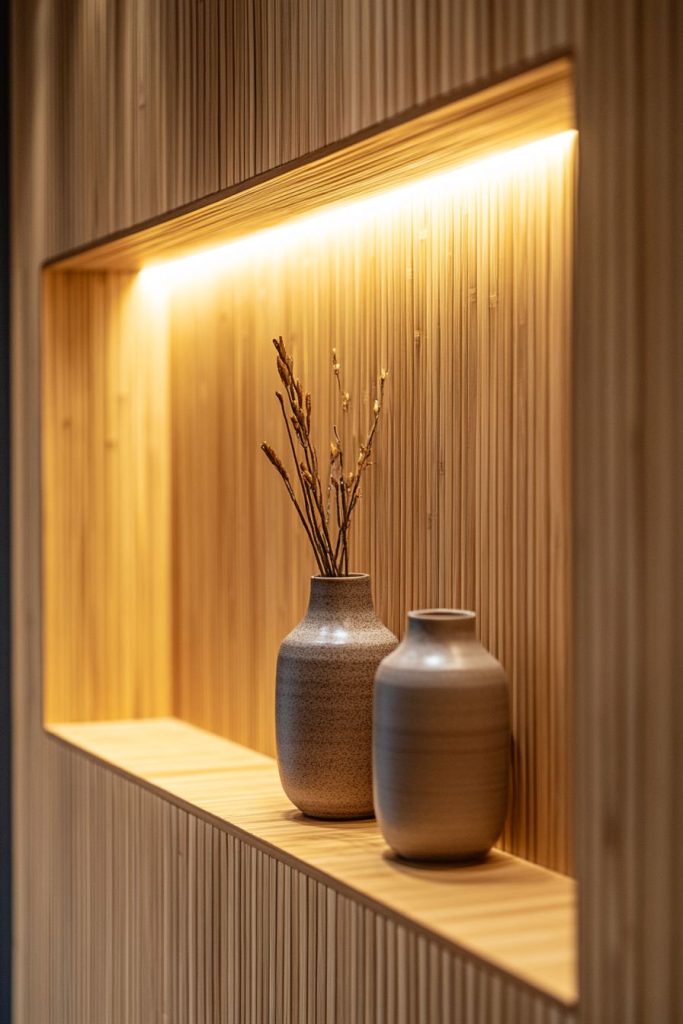
- Softening sharp lines in minimalist architecture
- Balancing stark colors like black, white, and grey
- Creating harmony with indoor plants and soft furnishings
The natural symmetry of bamboo slats can also amplify a room’s sense of order and calm.
Types of Bamboo Wall Treatments
Horizontal Slats for a Contemporary Look
Horizontally placed bamboo strips offer a clean, streamlined look that aligns perfectly with modernist sensibilities. These walls elongate the appearance of a room and enhance spatial flow.
Vertical Bamboo Poles for Tropical Elegance
Full bamboo poles affixed vertically add a more rustic or tropical flavor. This style evokes spa-like environments and pairs beautifully with large windows, indoor plants, and woven textiles.
Bamboo Paneling and Veneers for Smooth Finishes
Flat bamboo veneer sheets mimic the look of solid wood and can be used in tighter or more refined spaces, such as powder rooms or formal dining areas.
Custom Carved Bamboo Panels
Intricate patterns carved into bamboo panels bring an artistic, bespoke feel. These are ideal for entryways, feature walls, or alcoves.
Reclaimed Bamboo Elements
Using salvaged bamboo reduces environmental impact while adding rich patina and character to the wall design.
Interior Styles that Embrace Bamboo Accent Walls
Modern Minimalist: Bamboo Introduces Depth Without Clutter
Minimalist interiors thrive on simplicity, clean lines, and clutter-free living. Yet, they can sometimes feel stark or sterile. A bamboo accent wall subtly breaks that monotony by introducing a tactile element without overwhelming the space. The linear grain of bamboo complements straight-edged furniture and monochrome color schemes, offering depth and warmth while preserving a sleek aesthetic. Think low-profile sofas, concrete floors, and a bamboo backdrop softly illuminated by indirect lighting.
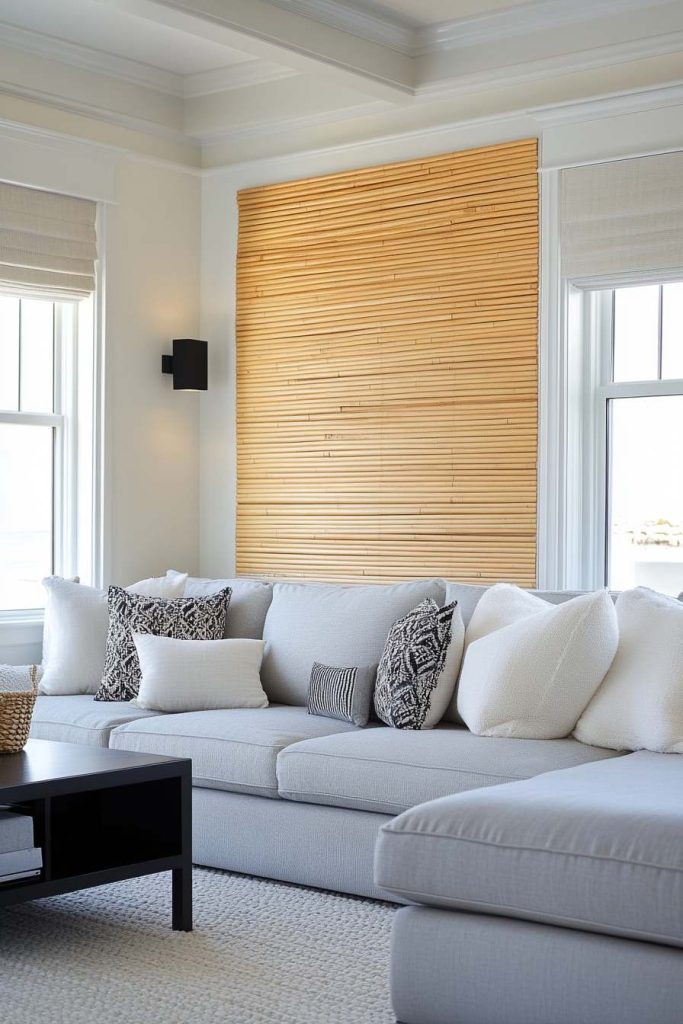
Japandi and Wabi-Sabi: Natural Imperfection as a Design Highlight
The Japandi style—a blend of Japanese minimalism and Scandinavian functionality—welcomes bamboo with open arms. Bamboo embodies the “wabi-sabi” philosophy of appreciating imperfection and impermanence. A bamboo wall in a Japandi space might be slightly uneven, unvarnished, or have visible nodules that tell a story of nature and authenticity. The material works especially well alongside linen drapes, handmade ceramics, and neutral-toned furniture in materials like ash or oak.
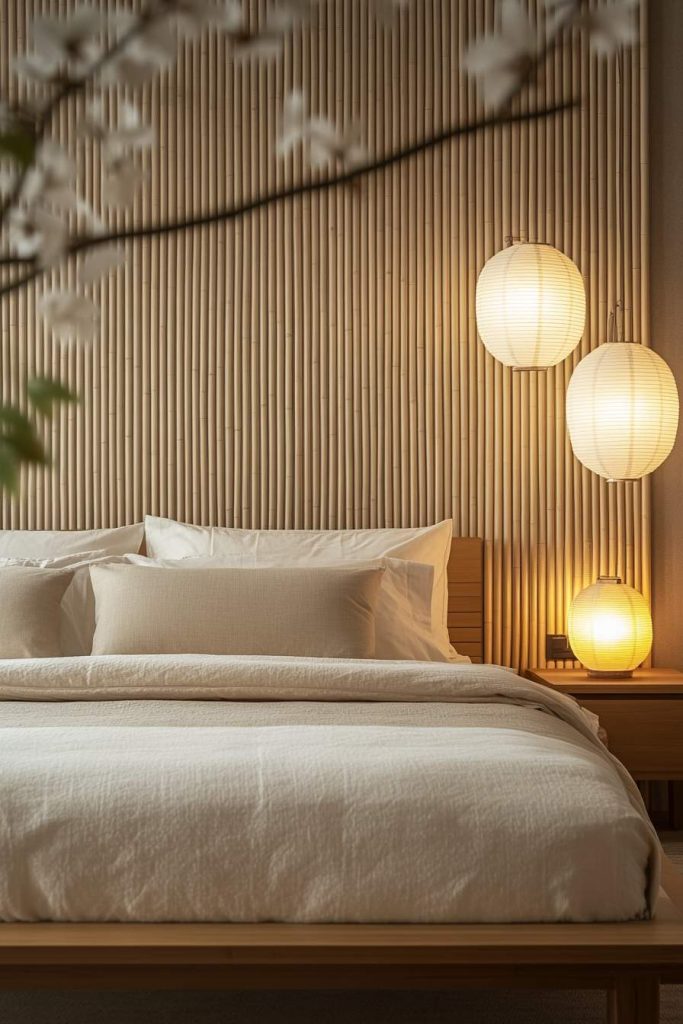
Boho Chic and Eco-Luxury: A Textural Anchor for Layered Textiles
Boho interiors thrive on texture and eclecticism. A bamboo wall becomes the perfect neutral canvas that grounds colorful pillows, rattan light fixtures, and globally inspired décor. In eco-luxury spaces, it adds upscale sustainability to the mix—think artisan-woven throws, reclaimed wood accents, and bamboo walls that make the space feel curated but not overdone. It bridges the gap between free-spirited and sophisticated.
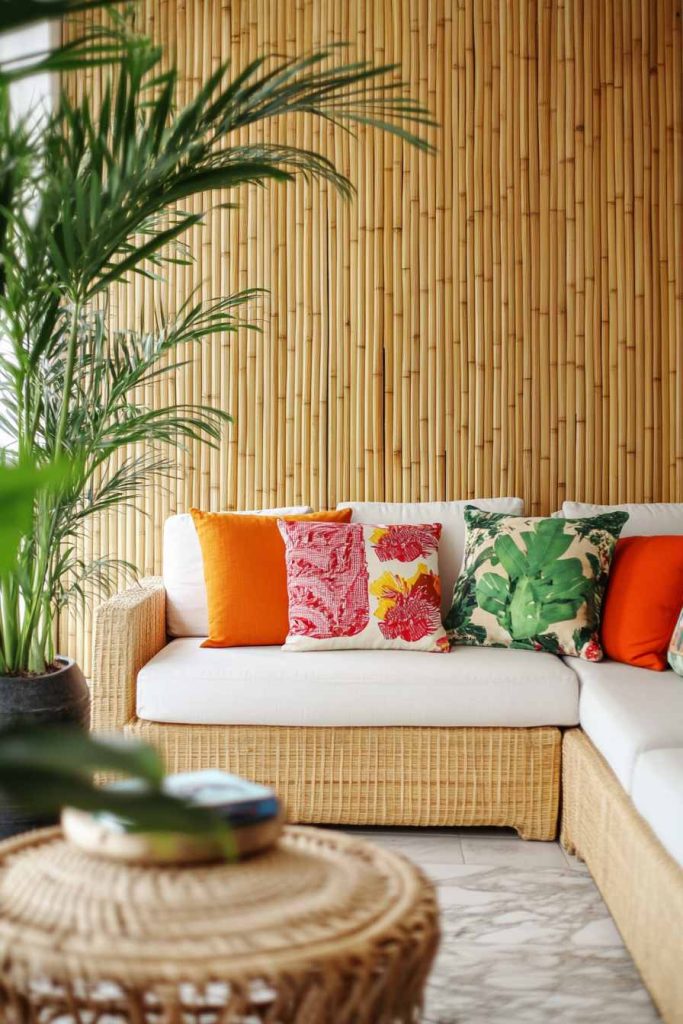
Urban Jungle: Bamboo and Bold Botanicals
If your home is a haven for indoor plants, a bamboo accent wall amplifies the biophilic experience. It serves as a vertical garden backdrop, enriching textures and creating a lush, tropical ambiance. Combined with monstera leaves, trailing pothos, and macramé hangings, bamboo brings harmony to the green chaos. Use it behind shelving filled with planters or create a full wall of vertical bamboo poles interspersed with plant holders.
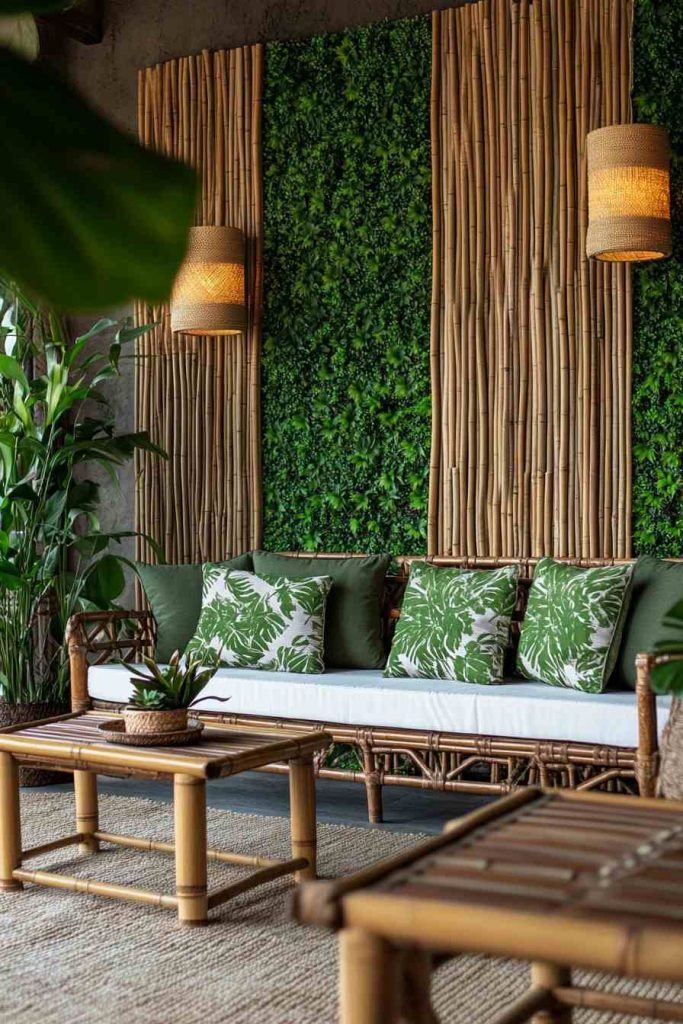
Scandinavian-Asian Fusion: Clean Lines Meet Organic Materiality
This emerging style takes the best of Nordic and Eastern sensibilities—soft colors, natural materials, and functional beauty. A bamboo accent wall in this context might feature pale finishes, clean edges, and integration with floating cabinetry or modular lighting. The result is serene, thoughtful, and visually balanced. Bamboo here isn’t just decoration—it becomes architecture.
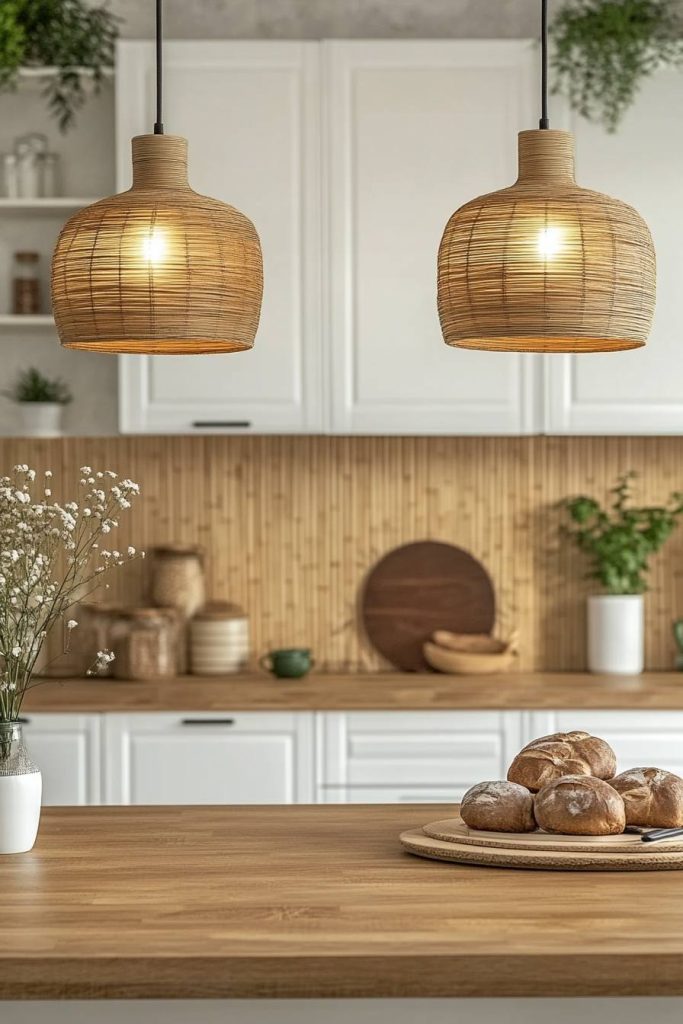
Best Rooms to Install Bamboo Accent Walls
Living Rooms: Creating a Focal Point
Living rooms benefit from a feature that grounds the space. A bamboo wall behind a large sectional sofa or entertainment unit immediately draws the eye and anchors the seating area. The tactile appeal of bamboo contrasts well with screens and speakers, softening technology-heavy zones with nature’s texture. Combine it with a neutral rug, matte black accents, and a few leafy plants for a balanced look.
Bedrooms: Bringing Serenity and Texture
Bamboo adds a natural, calming element ideal for rest. When used behind the bed, it can function as a built-in headboard or an entire feature wall. Choose wider bamboo planks for a seamless look or vertical slats for added height. Soft, layered textiles in earthy tones—think taupe, ivory, and sage—enhance the effect, turning your bedroom into a tranquil sanctuary.
Bathrooms: Spa-Like Bamboo Ambience
Bamboo is a popular choice for wellness-inspired bathrooms. Whether it’s a floor-to-ceiling installation behind a soaking tub or a half-wall alongside a floating vanity, it infuses the space with a zen-like atmosphere. Complement the bamboo with stone basins, brushed brass fixtures, and ambient lighting for a luxe, spa-like retreat. Use water-resistant treatments and good ventilation to ensure durability.
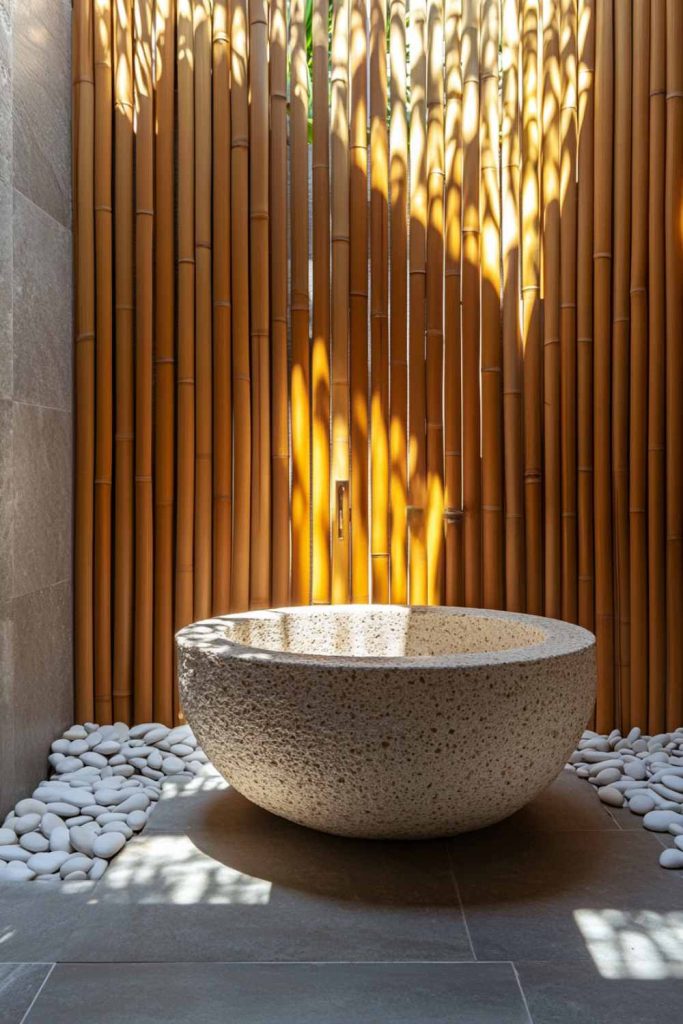
Kitchens: Warmth Without Overwhelm
In the kitchen, a little bamboo goes a long way. Apply it behind open shelves, around a breakfast nook, or as a backsplash alternative (sealed properly, of course). It softens the often sterile, hard surfaces like stone countertops and stainless-steel appliances. Pair it with white cabinetry and pendant lighting for a warm, welcoming culinary space.
Home Offices: Natural Backdrops for Productivity
With the rise of remote work, home offices must be both functional and inspiring. A bamboo wall behind your desk not only creates a beautiful Zoom background but also promotes focus and calm. It reduces visual noise and pairs well with ergonomic furniture, warm lighting, and minimal accessories. Install shelving or artwork directly on the bamboo for a curated look.
Bamboo Wall Colors and Finishes
Natural Honey and Caramel Tones: Organic Warmth
These classic shades highlight bamboo’s true identity. Warm, golden hues complement most color palettes and add lightness to interiors. Ideal for Scandinavian, boho, or tropical styles, they make spaces feel cozy without darkening the room. These finishes are typically untreated or lightly varnished to retain the grain and sheen of the bamboo.
Whitewashed Bamboo for a Coastal Feel
For coastal or beachy interiors, whitewashed bamboo evokes a breezy, sun-bleached vibe. It blends seamlessly with driftwood, linen, and nautical palettes of sand, blue, and cream. The whitewash slightly mutes the grain but maintains texture, perfect for laid-back spaces like reading nooks, sunrooms, or holiday homes.
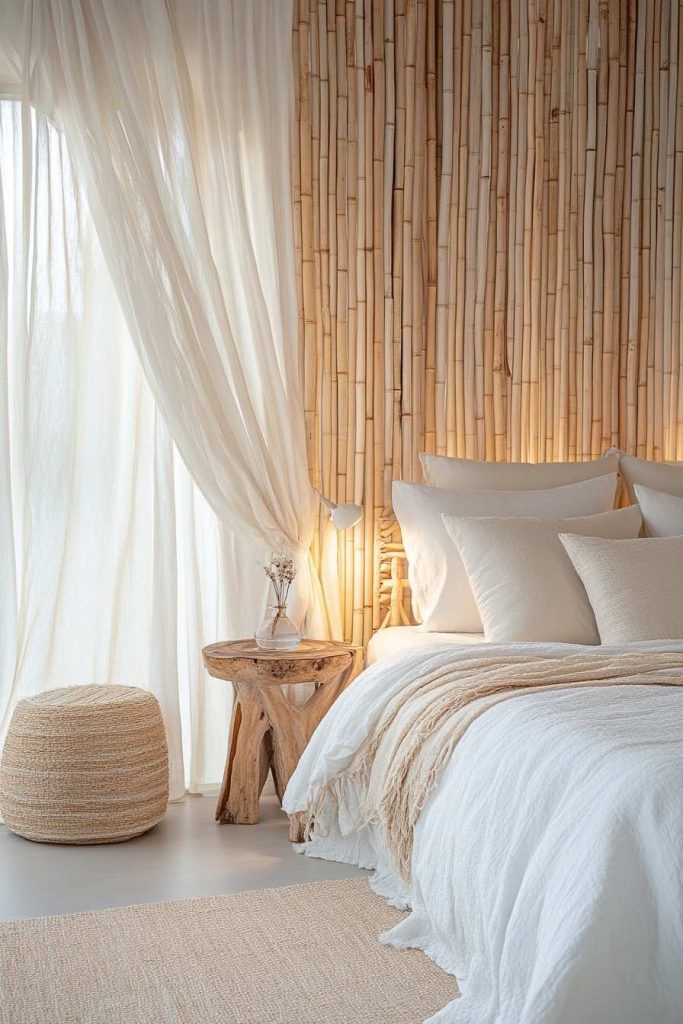
Dark-Stained Bamboo for Drama
Deep espresso or charcoal stains give bamboo a sophisticated edge. This works particularly well in masculine interiors or spaces with a moody color palette—think charcoal walls, velvet sofas, and smoked glass. The darker finish highlights the natural contrast in the grain, making the wall a striking focal point.
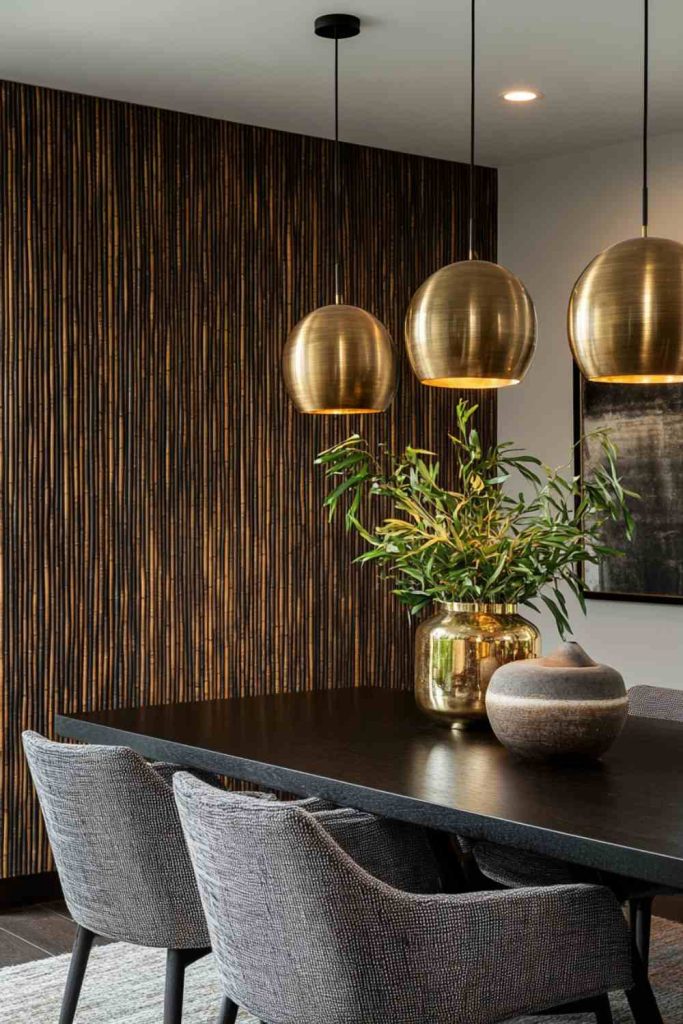
Painted Bamboo in Modern Neutrals
While many prefer the natural look, bamboo can also be painted in muted tones like dove grey, sage, or matte black for a sleek, modern appearance. Painting works best with bamboo panels or slats rather than full poles. Use chalk or matte finishes to retain texture, and coordinate with the room’s existing decor for a cohesive look.
Combining Bamboo with Other Materials
Concrete and Steel for Industrial Edge
Bamboo offers a visual and tactile counterpoint to cold, industrial materials. In a loft or warehouse-style home, pairing raw concrete floors and steel frames with bamboo slats can soften the aesthetic and add warmth. Use black-stained bamboo for an edgier vibe or natural hues for a more balanced look.
Glass and Bamboo: Transparency Meets Texture
Bamboo and glass work surprisingly well together. Consider bamboo-framed glass partitions, shower walls, or even stair railings. The contrast between the opaque texture of bamboo and the smooth transparency of glass creates an elegant and modern dynamic.
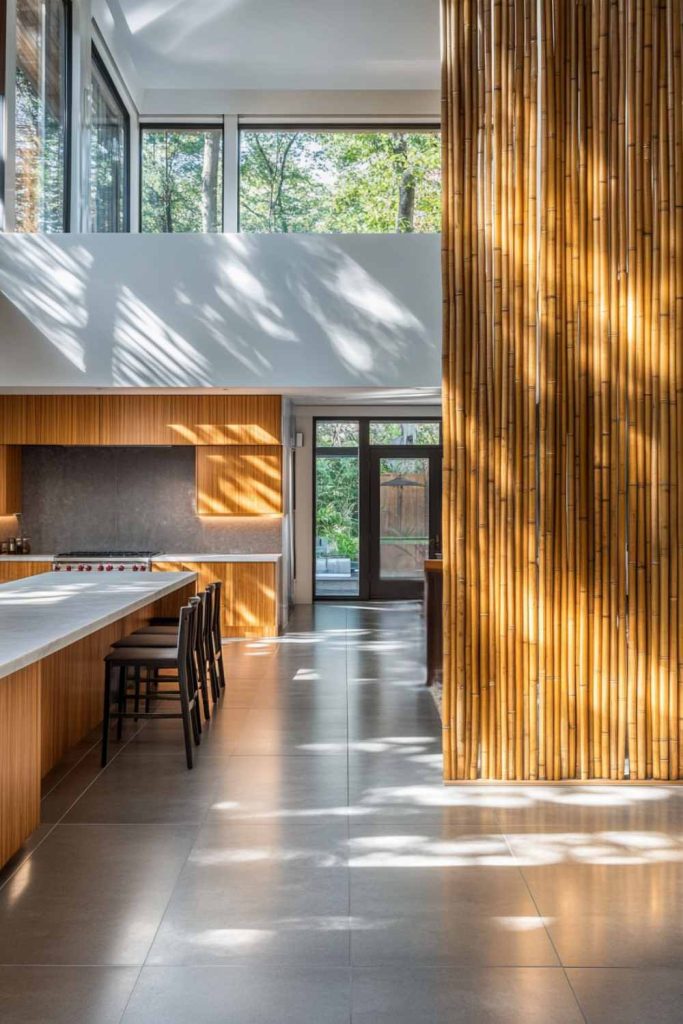
Bamboo and Wood Combinations
Using bamboo with other wood tones can create a rich, layered environment. Try mixing it with walnut, oak, or birch—either through furniture, ceiling beams, or floor trims. The trick is to maintain a unified palette so that the various grains and tones harmonize rather than clash.
Pairing with Textiles and Plants
Few materials complement bamboo better than textiles and greenery. Soft fabrics like cotton, linen, and wool add visual and physical comfort, while houseplants enhance the natural ambiance. Macramé wall hangings, floor cushions, and woven throws can turn a bamboo wall into a complete sensory experience.
Lighting Techniques to Highlight Bamboo Walls
Spotlights and Track Lighting
Directional lighting such as adjustable spotlights or track fixtures can be aimed to highlight the vertical or horizontal grain of bamboo. This setup creates rich shadowing, emphasizing texture and adding dimension to the wall.
Recessed Wall Washers
Wall washers provide even, ambient lighting across the bamboo surface. This is ideal for living rooms, hallways, or bedrooms where a soft, glowing wall enhances the mood without distracting focus.
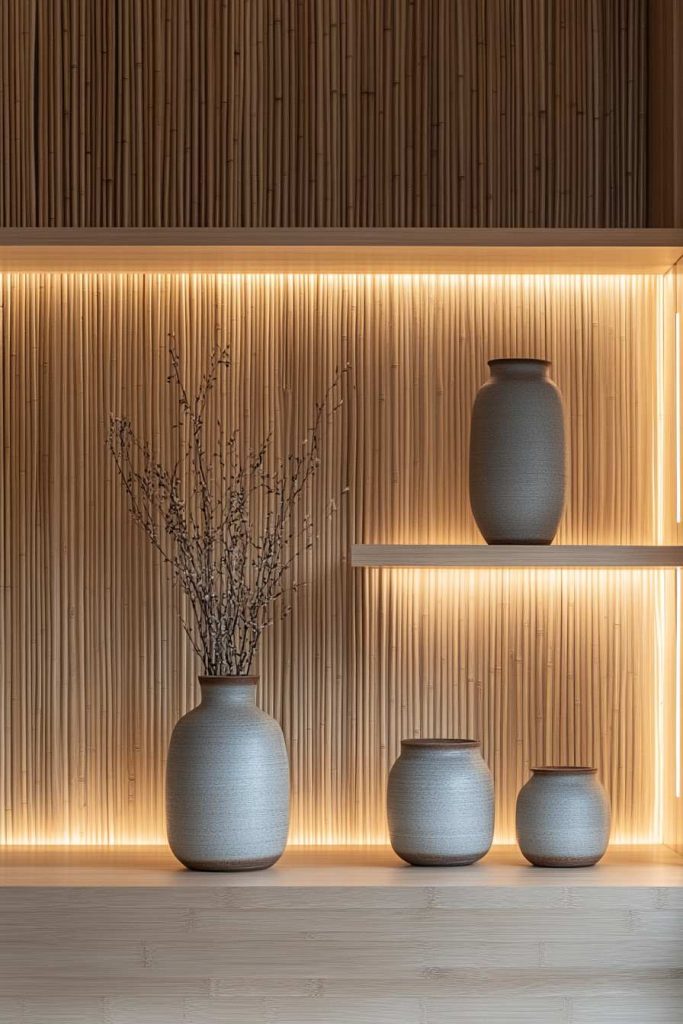
Backlit Bamboo Panels for Mood
Adding LED strips behind bamboo slats or panels creates a floating wall effect. Especially striking in bedrooms or spas, this setup transforms bamboo into a light source, casting gentle illumination and visual depth.
Natural Light Enhancement
Installing a bamboo wall near a window allows it to interact beautifully with daylight. Morning or golden-hour light enhances the tones and shadows of bamboo, making it feel alive and ever-changing throughout the day.
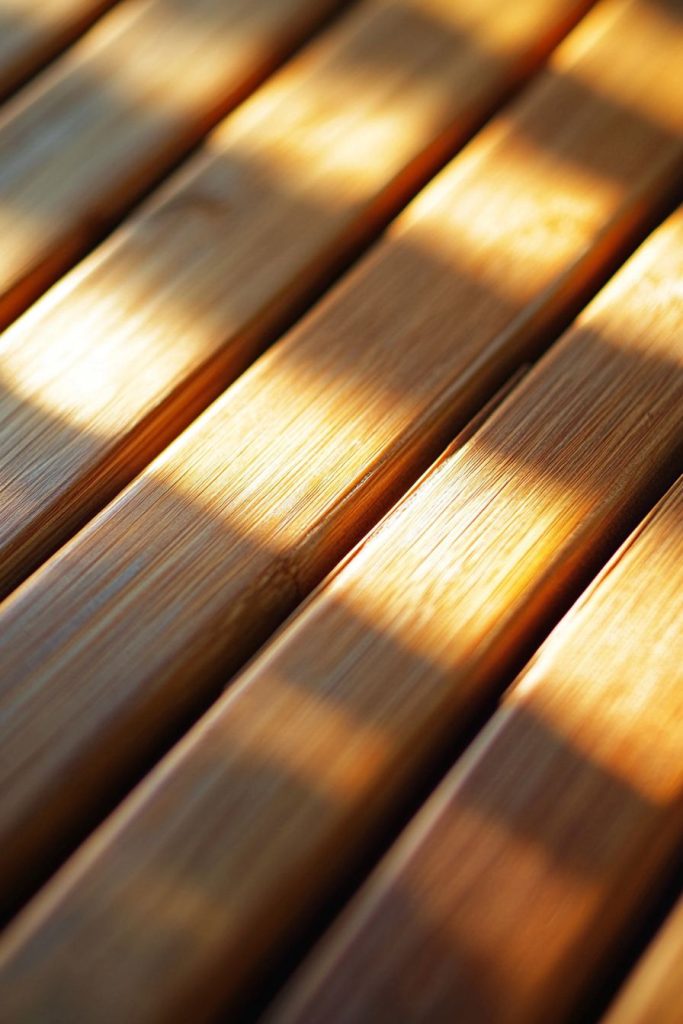
Bamboo Wall Maintenance and Durability
Sealing and Waterproofing Bamboo Surfaces
To maintain its integrity, especially in kitchens or bathrooms, bamboo should be treated with a polyurethane, water-based sealer. This not only protects the material from moisture but also highlights the grain and adds a subtle sheen.
Cleaning Techniques and Tools
Bamboo is relatively low-maintenance. Dust with a microfiber cloth and occasionally wipe with a damp cloth and mild wood-safe soap. Avoid soaking the surface or using abrasive cleaners, which can wear down the finish or cause discoloration.
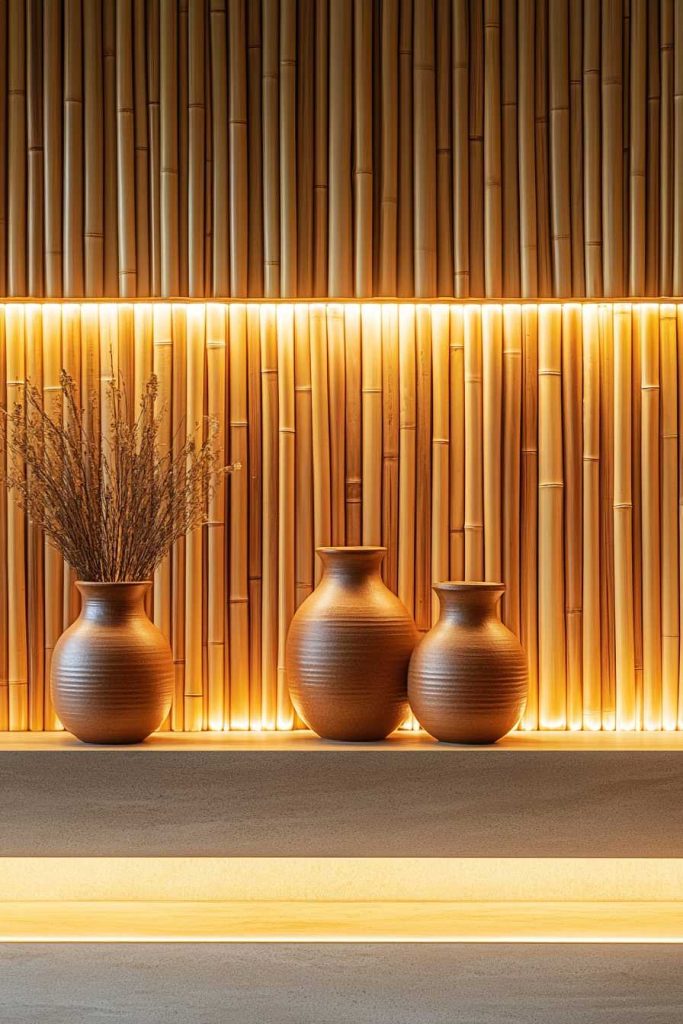
Avoiding Humidity and Pests
While bamboo is naturally resistant to pests, high humidity can still affect it over time. Ensure good airflow in rooms where it’s installed, and avoid placing bamboo directly against exterior walls without proper insulation. In tropical or humid climates, consider antimicrobial finishes or laminated bamboo for extra protection.
Budgeting and Cost Factors
Integrating a bamboo accent wall into your home doesn’t have to break the bank, but thoughtful budgeting is key to maximizing value and aesthetic impact. From choosing materials to deciding on labor and installation, each decision influences the overall cost. Let’s break down the main cost considerations and explore how bamboo compares to other accent wall options.
Raw Material vs. Pre-Finished Panels
The cost of bamboo materials varies significantly based on type, finish, and sourcing. Here’s a detailed breakdown:
| Material Type | Average Price per Sq. Ft. | Description |
|---|---|---|
| Raw Bamboo Poles | $5–$10 | Natural, untreated poles used for rustic or tropical styles. Often sold in bundles. |
| Bamboo Veneer Panels | $7–$15 | Thin sheets mounted onto a backing for smooth, modern finishes. Great for larger surfaces. |
| Engineered Bamboo Panels | $12–$18 | Laminated, high-density bamboo planks designed for longevity and finish consistency. |
| Carved or Designer Panels | $20–$35+ | Custom or decorative bamboo panels with patterns, textures, or artistic designs. |
Additional costs may include:
- Adhesives or mounting systems ($50–$100 depending on wall size)
- Sealers or finishes ($30–$70 per gallon for polyurethane or water-based sealants)
- Backing material or frame supports for uneven surfaces (plywood or MDF can cost $1–$3 per square foot)
Imported vs. Local Materials
Imported bamboo (often from Asia) may be cheaper due to mass production but can come with questionable sustainability practices or quality. Locally sourced or FSC-certified bamboo may cost more initially but offers peace of mind and lower transportation emissions.
DIY Installation vs. Hiring a Professional
Your choice between a DIY approach and hiring a pro will significantly impact both budget and results.
DIY Installation
- Cost Savings: You can save 30–50% of the overall project cost by doing the work yourself.
- Typical DIY Budget (12×8 wall):
- Materials: ~$400–$700
- Tools (if not already owned): ~$150–$300
- Time Commitment: 1–2 full days, depending on your experience and the complexity of the layout.
Pros:
- Lower upfront costs
- Full creative control
- Skill-building opportunity
Cons:
- Requires precision and patience
- Mistakes may waste materials
- Limited tools or improper sealing can affect durability
Professional Installation
- Labor Costs: Generally range from $5–$15 per square foot
- Turnkey Service: Professionals can assist with measuring, cutting, mounting, and finishing
- Ideal For: Custom layouts, large-scale walls, or designer finishes
Pros:
- Efficient, polished results
- Fewer mistakes and better durability
- Installation may include warranties
Cons:
- Higher upfront cost
- Less control over minor design decisions
Long-Term Cost Benefits from Durability
One of bamboo’s biggest financial advantages is its exceptional lifespan when maintained properly. Here’s how it saves money over time:
1. Low Maintenance
Unlike paint or wallpaper that may need frequent retouching or replacement, bamboo is highly durable. A well-sealed bamboo wall resists stains, surface wear, and minor impacts. Regular dusting and occasional cleaning are usually enough.
2. Fewer Replacements
Bamboo doesn’t fade or peel easily, especially when installed indoors. This reduces the need for refinishing or replacement compared to vinyl panels, which may warp or discolor over time.
3. Energy Savings
When paired with insulation, bamboo can act as a thermal buffer—keeping rooms warmer in winter and cooler in summer. This can translate into modest but consistent energy savings.
4. Value Addition to Property
Buyers increasingly value sustainable and stylish features. A professionally installed bamboo accent wall may increase resale value or provide a unique edge in real estate listings.
Comparative Cost Summary
| Accent Wall Material | Avg. Cost per Sq. Ft. (Installed) | Maintenance Frequency | Environmental Impact |
|---|---|---|---|
| Bamboo | $10–$25 | Low | Very Low (renewable) |
| Wood (Hardwood) | $15–$30 | Medium | Medium to High |
| Stone or Brick Veneer | $20–$40 | Low | High (heavy mining) |
| Wallpaper | $2–$8 | High (peeling, fading) | Low |
| Laminate Panels | $8–$15 | Medium | Medium (synthetic) |
Tips for Budgeting Your Bamboo Wall Project
- Get Multiple Quotes: If hiring a pro, compare at least 2–3 installation bids.
- Shop Off-Season: Material costs may dip during off-peak months (late winter or summer).
- Plan for Hidden Costs: Include 10–15% for unexpected issues like wall prep or extra adhesive.
- Buy Extra Material: Order 10% more bamboo than needed to allow for cuts, damage, or pattern alignment.
- Check Local Suppliers First: You may find high-quality bamboo with fewer shipping fees or delays.
11. How to Install a Bamboo Accent Wall
Tools and Materials Needed
- Measuring tape, adhesive or nails, bamboo slats or panels, saw, level, sealant.
Step-by-Step DIY Guide
- Measure wall and prep surface.
- Plan layout (horizontal, vertical, staggered).
- Cut bamboo to size.
- Apply adhesive or mount with brads.
- Finish with sealant.
Tips for Seamless Alignment and Mounting
- Use a laser level.
- Leave small expansion gaps.
- Test-fit before final application.
Common Mistakes to Avoid
- Skipping acclimation time.
- Uneven slat spacing.
- Overloading wall fixtures.
Customizing Your Bamboo Wall
Integrating Shelves and Niches
Bamboo accent walls can be made functional as well as beautiful by incorporating shelving or built-in niches. Floating shelves mounted against bamboo slats look particularly elegant, blending functionality with seamless design. Use them to display minimalist pottery, books, or greenery. When installing, ensure that shelf anchors penetrate through to the wall behind the bamboo to avoid structural instability. For deeper niches, bamboo can be layered or framed to create built-in alcoves for lighting, art, or decorative storage.
Creating Built-in Lighting Features
Lighting adds dramatic flair to bamboo walls. Consider installing:
- Recessed LED strips behind horizontal or vertical slats for a subtle glow
- Integrated sconces mounted onto bamboo panels, with brushed brass or matte black finishes
- Uplighting or downlighting that casts shadows and highlights natural grain textures
These lighting techniques turn your bamboo wall into a functional piece of illuminated art, especially effective in hallways, bedrooms, and home spas.
Using Bamboo as a Divider Wall
Bamboo excels as a room divider in open-concept layouts. Slatted bamboo dividers allow light to filter through while still defining zones. They’re ideal for:
- Separating a kitchen and dining area
- Creating a semi-private workspace in a studio apartment
- Zoning off an entryway from the main living space
For added elegance, integrate planter boxes, display shelving, or sliding track mechanisms for adjustable layouts.
13. Sustainable Sourcing of Bamboo
Certified Green Suppliers to Know
To ensure that your bamboo wall aligns with sustainability goals, source from certified, ethical suppliers. Look for companies that carry:
- FSC® (Forest Stewardship Council) certification – Ensures responsible forest management and traceability.
- GREENGUARD Certification – Indicates low chemical emissions and indoor air safety.
- LEED-compliant materials – Can contribute points toward green building certifications.
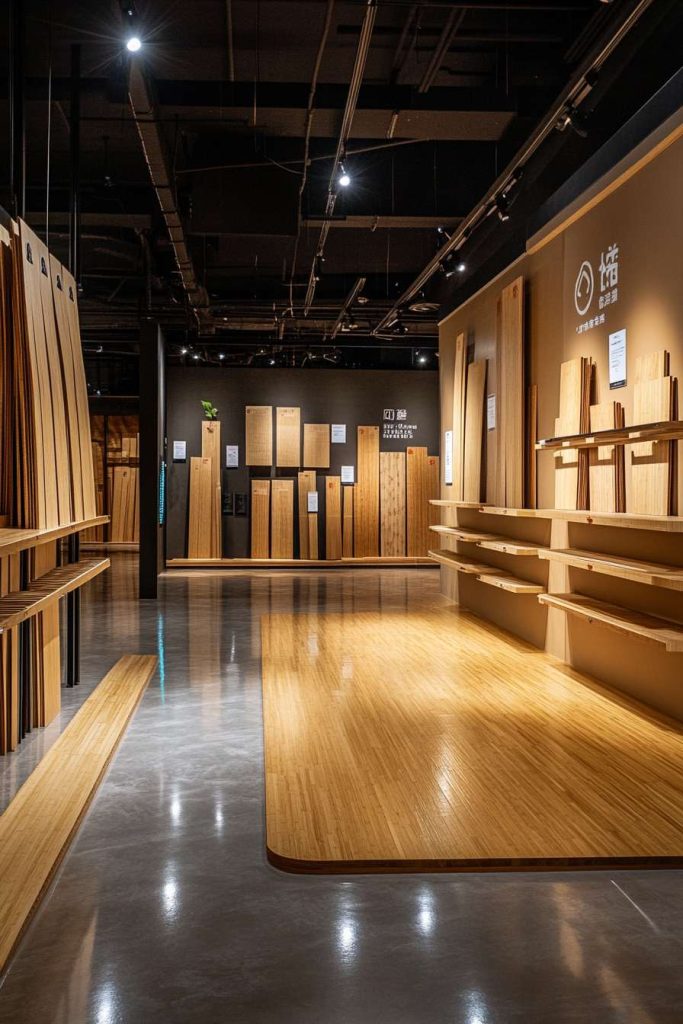
Top suppliers include:
- Plyboo (USA)
- Teragren (USA)
- Bamboo Import Europe
- Cali Bamboo (USA)
These companies offer verified eco-friendly bamboo, often with customization options.
Avoiding Bamboo with Harmful Adhesives
Not all bamboo is created equal. Some products, particularly inexpensive imports, use adhesives that emit formaldehyde or other volatile organic compounds (VOCs). Choose bamboo labeled as:
- Low-VOC or Zero-VOC
- Formaldehyde-free
- CARB Phase 2 compliant (for California standards)
These standards help ensure that your indoor air remains clean and safe.
FSC-Certification and Eco Labels
Don’t take sustainability claims at face value—look for independent third-party labels and request certification documentation from suppliers. FSC-certified bamboo ensures ethical harvesting and social responsibility throughout the supply chain.
Case Studies of Homes with Bamboo Accent Walls
Urban Condo in NYC
In a sleek Manhattan apartment, a bamboo panel wall sits behind a floating black media console. The wall adds a warm, natural layer to the otherwise monochromatic living space. Paired with recessed ceiling lights and minimalist furniture, the bamboo element breaks up the starkness without competing for attention.
Beach House in Malibu
A whitewashed bamboo wall in the sunroom reflects natural light and evokes the casual elegance of coastal living. With rattan chairs, linen curtains, and driftwood sculptures, the wall becomes part of a breezy, relaxed atmosphere that blends indoors and outdoors.
Minimalist Loft in Tokyo
Here, thin vertical bamboo slats form a floor-to-ceiling wall along the hallway, partially concealing the kitchen while allowing light to pass through. The design reflects Japanese principles of modesty and spatial fluidity, offering both function and serenity.
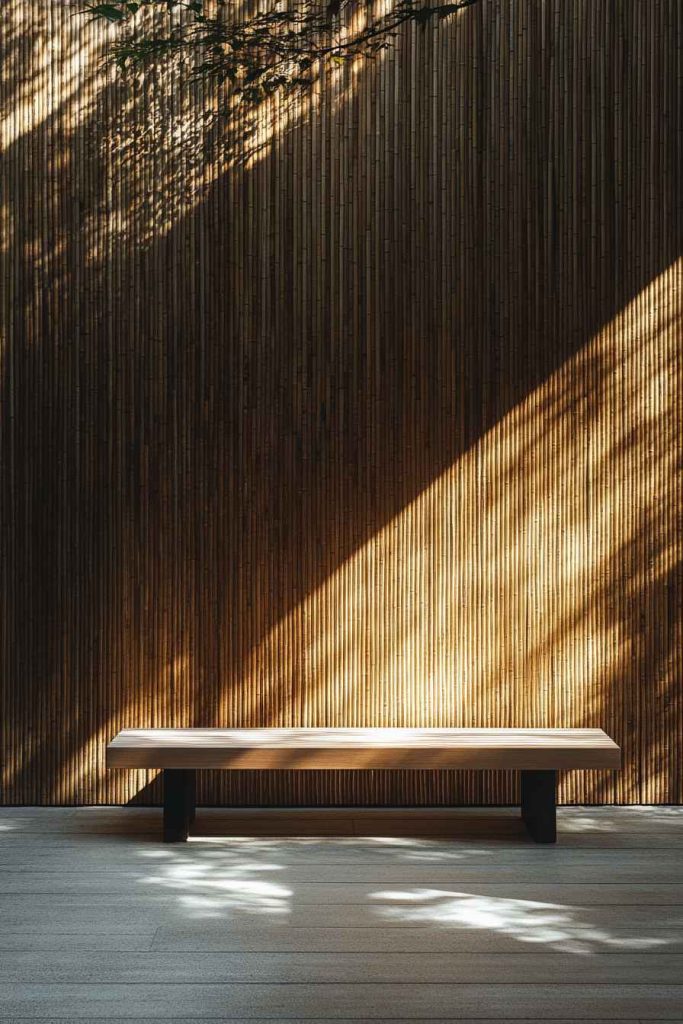
Eco-Cabin in British Columbia
Reclaimed bamboo is used in a cozy, off-grid cabin as both wall paneling and ceiling treatment. It adds rich character with its weathered patina, complementing the raw timber beams and stone fireplace. The bamboo here speaks to the home’s sustainability mission and connection to nature.
Commercial Uses of Bamboo Walls
Hotel Lobbies and Spas
High-end hotels are turning to bamboo for statement walls behind reception desks and in relaxation lounges. Paired with soft lighting, water features, and minimalist furnishings, bamboo delivers a luxurious yet organic impression.
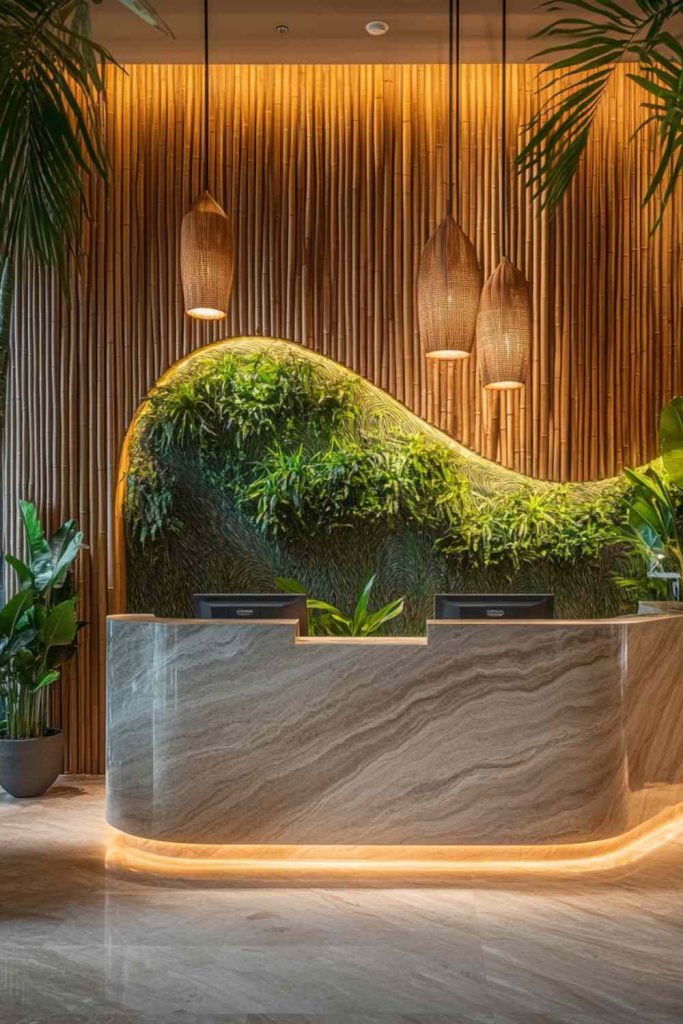
Yoga Studios and Wellness Centers
Bamboo accent walls in yoga rooms reinforce themes of balance, nature, and mindfulness. Whether used behind a mirror wall or near an altar space, the material supports a tranquil, restorative energy.
Sustainable Office Spaces
In modern office interiors, bamboo panels serve as elegant partitions or statement walls in boardrooms. They’re acoustically helpful and aesthetically aligned with green building certifications. Combined with ergonomic furniture and biophilic design, bamboo enhances wellness and focus at work.
Restaurants with Tropical Themes
Tiki bars and beach-inspired bistros often use full bamboo poles for bar fronts, walls, or ceilings. Even high-end eateries use vertical bamboo slats to create serene dining environments that reflect themes of nature, simplicity, and health-conscious living.
Trends: What’s Next for Bamboo in Modern Interiors
Curved Bamboo Wall Features
Designers are experimenting with arched bamboo panels and wave-like textures to soften straight lines in contemporary interiors. These sculptural walls make bold design statements while retaining bamboo’s natural elegance.
Acoustic Bamboo Wall Treatments
Beyond aesthetics, bamboo is being utilized for sound absorption. Perforated panels or 3D bamboo tiles can dampen sound while enhancing visual interest, making them ideal for media rooms, offices, and commercial settings.

Modular Bamboo Wall Panels
Prefabricated bamboo panel kits are on the rise, offering homeowners the ability to customize and rearrange designs easily. These kits may include interlocking panels, pre-cut designs, or even rotating panels for a dynamic wall experience.
Bamboo 3D Wall Art
Art meets architecture with 3D bamboo installations. These range from geometric wall sculptures to botanical reliefs carved into bamboo veneer. The result: functional decor that blends texture, warmth, and visual intrigue.
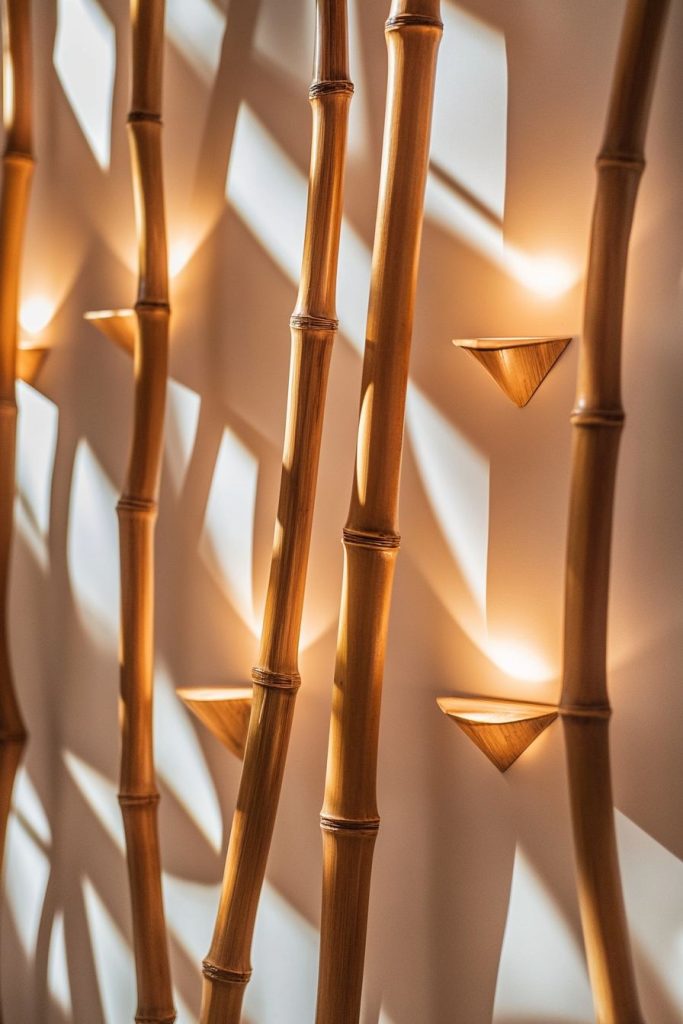
Design Tips from Interior Experts
“Pair bamboo with warm LED lighting for the most inviting glow.”
— Aiko Yamazaki, Tokyo-based designer
“Don’t overdo it—one bamboo wall is often more impactful than four.”
— Marie Klein, Scandinavian interiors specialist
Recommended Color Palette
To accentuate bamboo’s warmth and enhance overall design harmony, consider:
- Sage Green: Connects visually with plant life and complements honey tones.
- Cream or Off-White: Keeps the focus on the texture of the bamboo.
- Matte Black: Adds contrast and modern edge.
- Soft Terracotta: Introduces earthy depth without overpowering the natural vibe.
Use these hues in textiles, decor, and accent furniture to unify the look.
Bamboo Walls and Biophilic Design
Enhancing Human-Nature Connection
Bamboo plays a key role in biophilic interiors—designs that connect people with nature. Its organic form, renewable origins, and tactile surface foster a psychological sense of grounding and presence in a space.
Psychological Benefits of Natural Elements
Numerous studies suggest that natural materials reduce stress, improve concentration, and enhance emotional well-being. A bamboo wall in a workspace, meditation room, or reading nook can contribute to a restorative atmosphere—boosting clarity and relaxation.
Creating Restorative Spaces
Combine bamboo with other biophilic elements like stone, plants, water features, or natural light to create restorative zones in your home. These spaces are especially valuable in urban environments where contact with nature is limited.
Bamboo Accent Wall Ideas You Can Try Today
Looking for simple, achievable ideas to incorporate bamboo into your space? Try one of these:
Statement Wall Behind the Bed
Create a floor-to-ceiling bamboo feature wall behind your bed instead of a traditional headboard. Use warm lighting and symmetrical bedside decor for a luxurious, serene vibe.
Framed Bamboo Panels as Art
Not ready for a full wall? Install a framed bamboo panel or two as textural wall art. These can be layered vertically or arranged in a grid to mimic gallery-style installations.
Bamboo Headboards or Media Wall Treatments
Attach pre-finished bamboo panels directly behind a bed or around your TV to add dimension and elegance without committing to an entire wall treatment.
DIY Slat Partition in Studio Apartments
Use vertical bamboo slats as a freestanding or ceiling-mounted divider to carve out zones in a studio. This adds function, privacy, and character without blocking light or airflow.

Final Thoughts
Bamboo accent walls are more than a passing trend—they’re a timeless solution for anyone looking to marry aesthetics with environmental consciousness. They create an instant connection to nature, add rich visual texture, and can be tailored to virtually any modern style. For homeowners, renters, and designers alike, bamboo is an investment in beauty, durability, and sustainability.
FAQ: Bamboo Accent Walls
Is bamboo a good choice for high-humidity areas like bathrooms?
Yes—just ensure it’s sealed properly with waterproof coatings and adequate ventilation.
Can I install a bamboo accent wall by myself?
Absolutely. Bamboo is lightweight and manageable, but precision is key. Pre-plan, measure, and use the right tools.
Will bamboo walls go out of style?
Not likely. Their natural look and environmental advantages make them a mainstay of eco-modern design.
How do I clean a bamboo wall?
Dust regularly and wipe with a damp microfiber cloth. Avoid harsh chemicals.
Where can I buy sustainably sourced bamboo panels?
Check suppliers like Plyboo, Cali Bamboo, Teragren, and locally certified wood shops.

